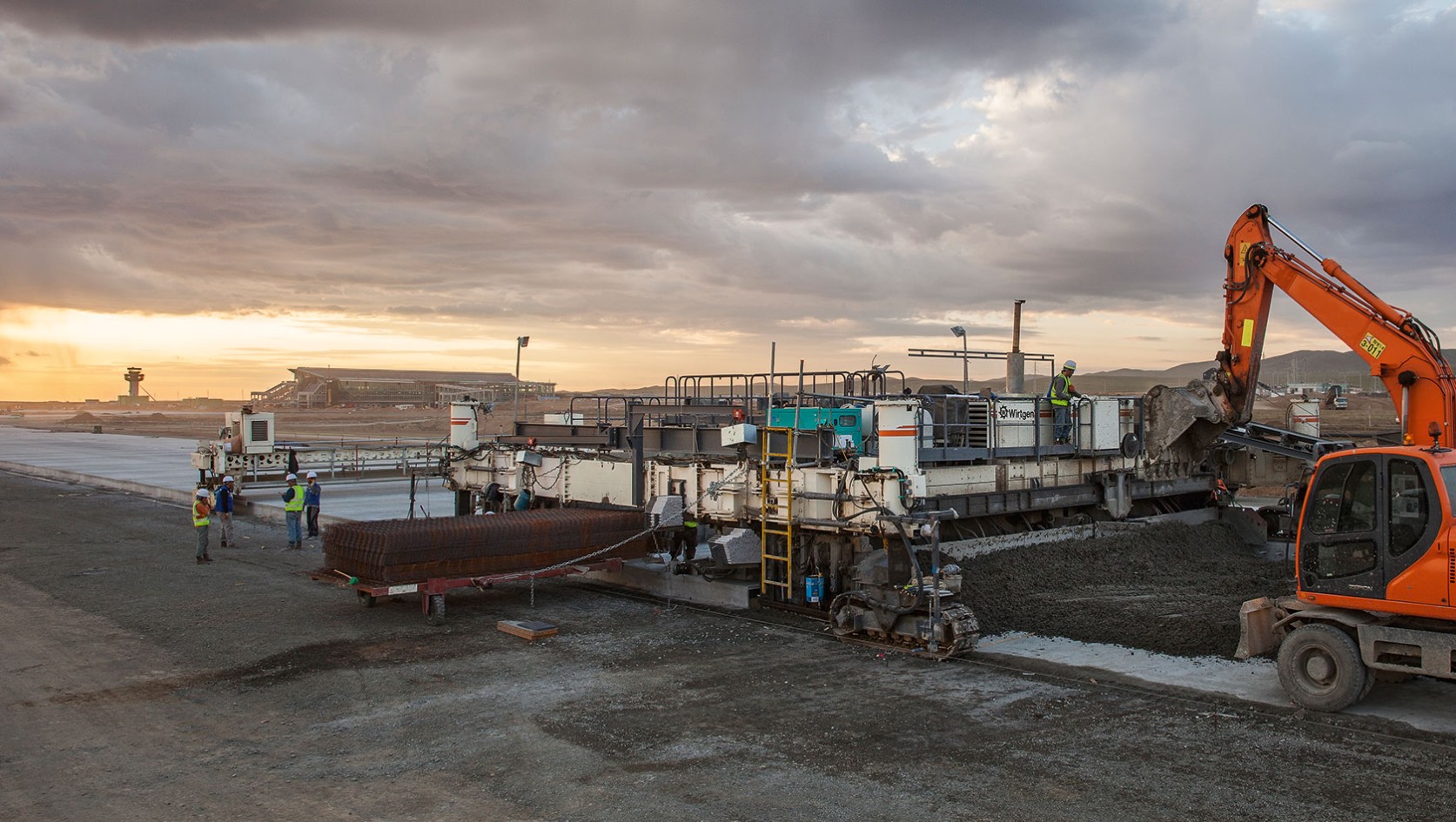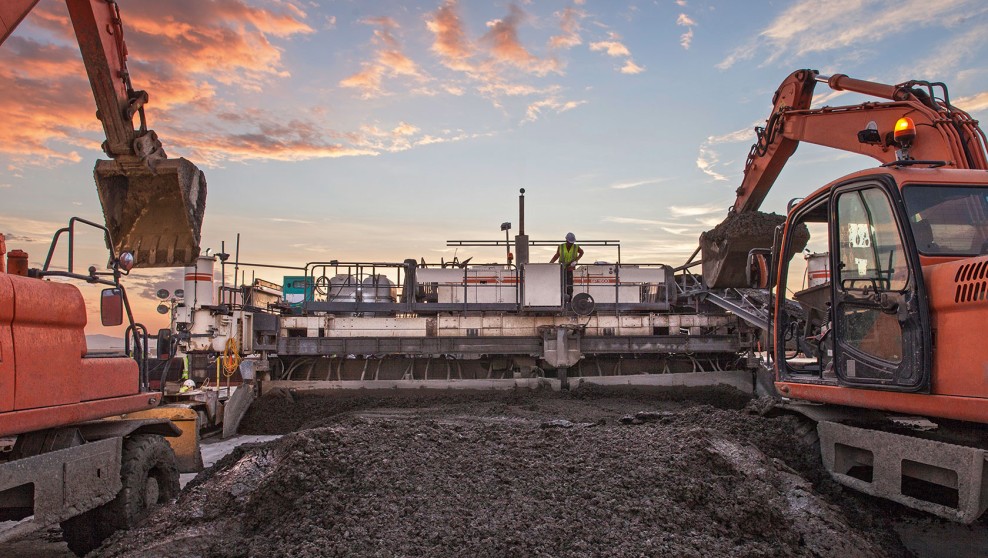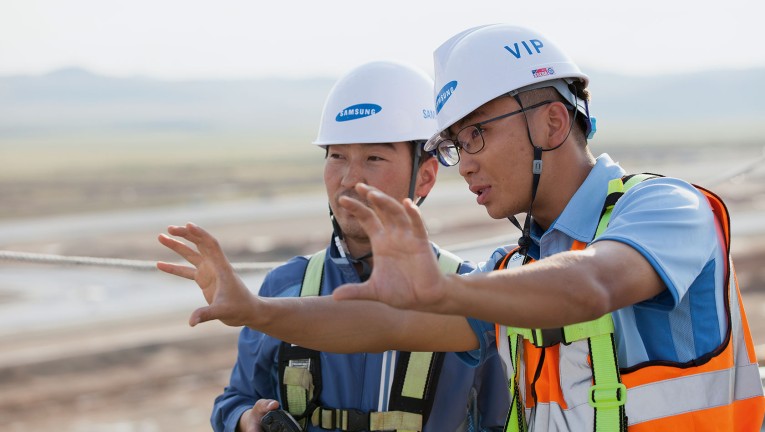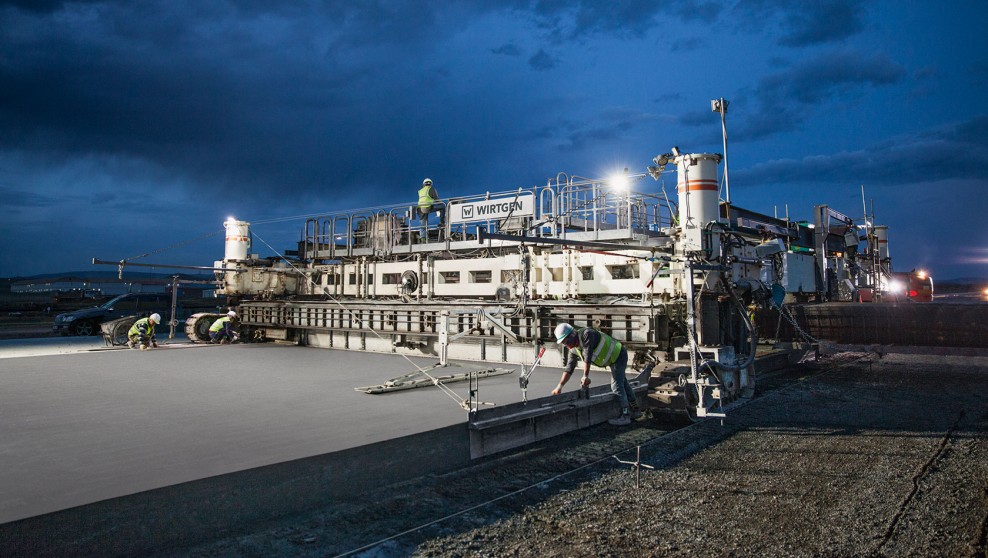Construction of the New Ulaanbaatar airport, Mongolia


Because of the dry desert winds, the work can only be carried out at night – and only for three to four months in the summer: the largest WIRTGEN slipform paver, the SP 1600, and the flexible SP 500 bring all their skills into play when paving concrete at the New Ulaanbaatar International Airport.
The SP 1600 could not pave concrete during the daytime, because the direct exposure to the intensive sunlight and the strong winds from the Gobi desert dry out the concrete pavement too quickly.
Ulaanbaatar is the hub for the booming economy and centre of expansion for trade and industry in Mongolia. The country is also the world’s second largest landlocked country and depends on efficient aircraft traffic bringing in and taking out passengers and cargo. Built in 1956, Chinggis Khaan International Airport was therefore in need of an upgrade and expansion of the airport capacity was absolutely essential. “The current airport faced safety, usability and operation deficiencies,” concludes Project Manager Enkhbat Navaantseden. In response to this situation, the new airport was set up in the Khushigiin Khundii valley of the province of Tuv, only 52 km away from Ulaanbaatar. The New Ulaanbaatar International Airport (NUBIA) is located on an easily accessible elevated plain with no mountains. The air corridor is hence relatively short and does not pass through any populated areas.
Dual-layer concrete paving with one machine saves time and money. That‘s why we opted for the SP 1600 – a machine we‘ve had great experiences with in the past.
Seunghwan Lee, Commercial Manager Sungdo Construction
NUBIA was designed with a robust 3,600 m-long category-4E runway, which is to be constructed from concrete. As a result, the runway can withstand the harsh conditions of the extreme continental climate. Furthermore, it will be able to handle large aircraft such as the Boeing 747 or the Airbus A340. The new location, advanced design and technical installations will help to improve the safety and the potential of the airport facility. NUBIA has been designed to take 3 million passengers a year, three times more than Chhingis Khaan International Airport, and it will even be able to handle ten times more cargo. The contract for the entire construction work was awarded to Samsung C&T. Sungdo Construction, a long-standing WIRTGEN customer based in South Korea, was selected as the subcontractor for the concrete paving work.
The SP 1600 is the flagship among the large WIRTGEN slipform pavers. Driven by a powerful 313 kW diesel engine, the inset paver builds high-quality concrete pavements in widths up to 16m and thicknesses up to 45 cm. Equipped with a second complete concrete paving kit, the SP 1600 was able to pave the dual-layer concrete slabs highly economically in a single pass. The 45 m-wide and 3,600 m-long runway was built in segments with a pave width of 11.25 m and a layer thickness of 38 cm on average. The paving work was carried out in a single operation. The first 27cm-thick cement concrete layer was immediately followed by a second, 11 cm-thick layer. Known as “wet-in-wet”, this paving process achieves a strong bond between the top-layer and the bottom-layer concrete. Wire bar fabric was placed between the layers for additional reinforcement before 48 electric vibrators emitting high-frequency vibrations optimally compacted the material. The finishing beam and super smoother which are integrated in the SP 1600 ensured that the specified functional properties were achieved.
Keeping the project on track: the high performance SP 1600 from Wirtgen was usually in operation from 7 p.m. to 6 a.m., installing dual-course concrete paving with an average thickness of 38 cm.
Meanwhile, the SP 500 was highly suitable for paving the slightly curved aprons and some taxiway sections – the connecting links between runways and aprons. Like its successor in the new SP 60 series, this machine excels with its wide range of applications in inset and offset paving. Up to five adjoining, parallel slabs can be paved with this easily manoeuvrable machine. As a result, concrete was swiftly paved on 50,000 m² of taxiways and 7,500 m² of aprons.


